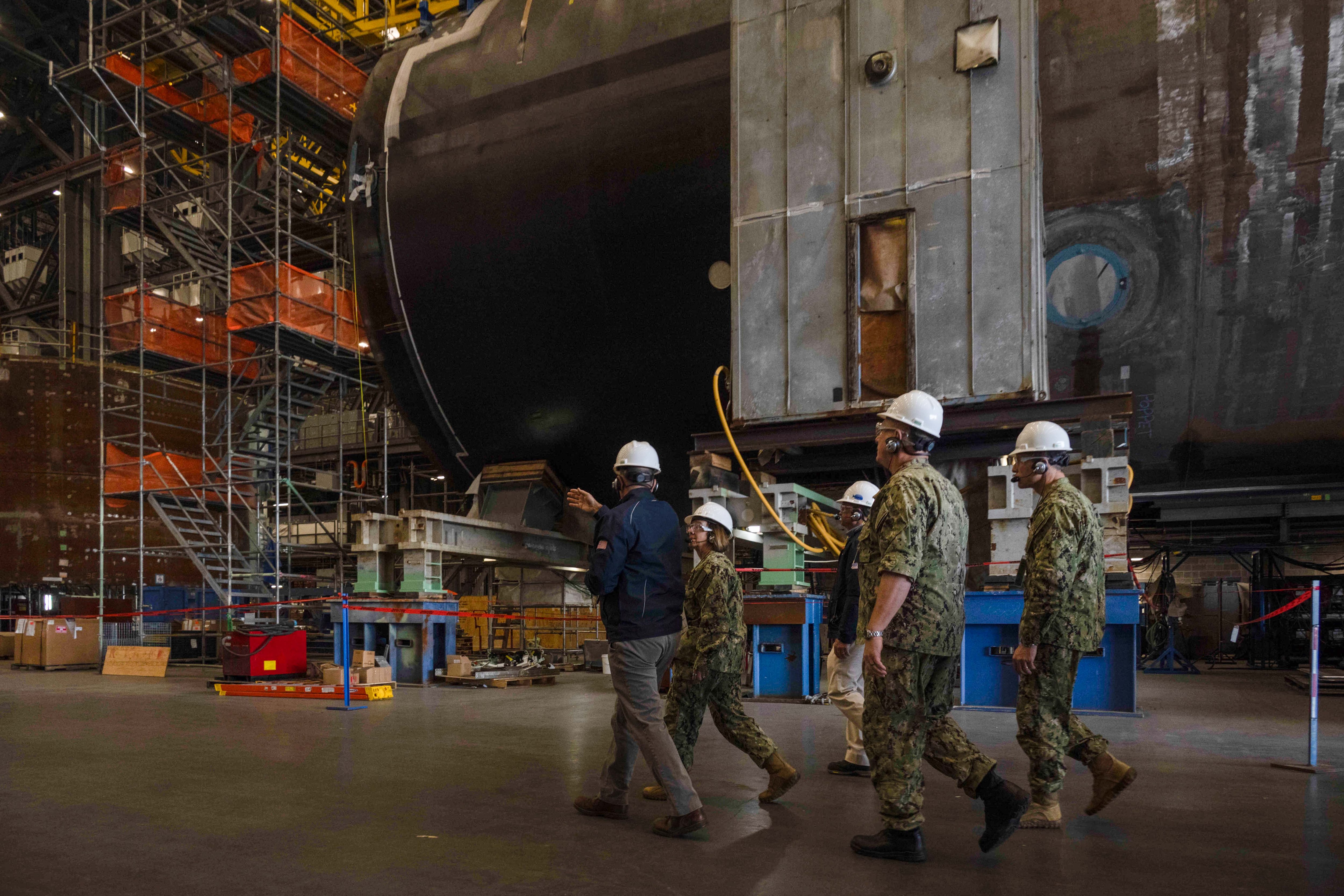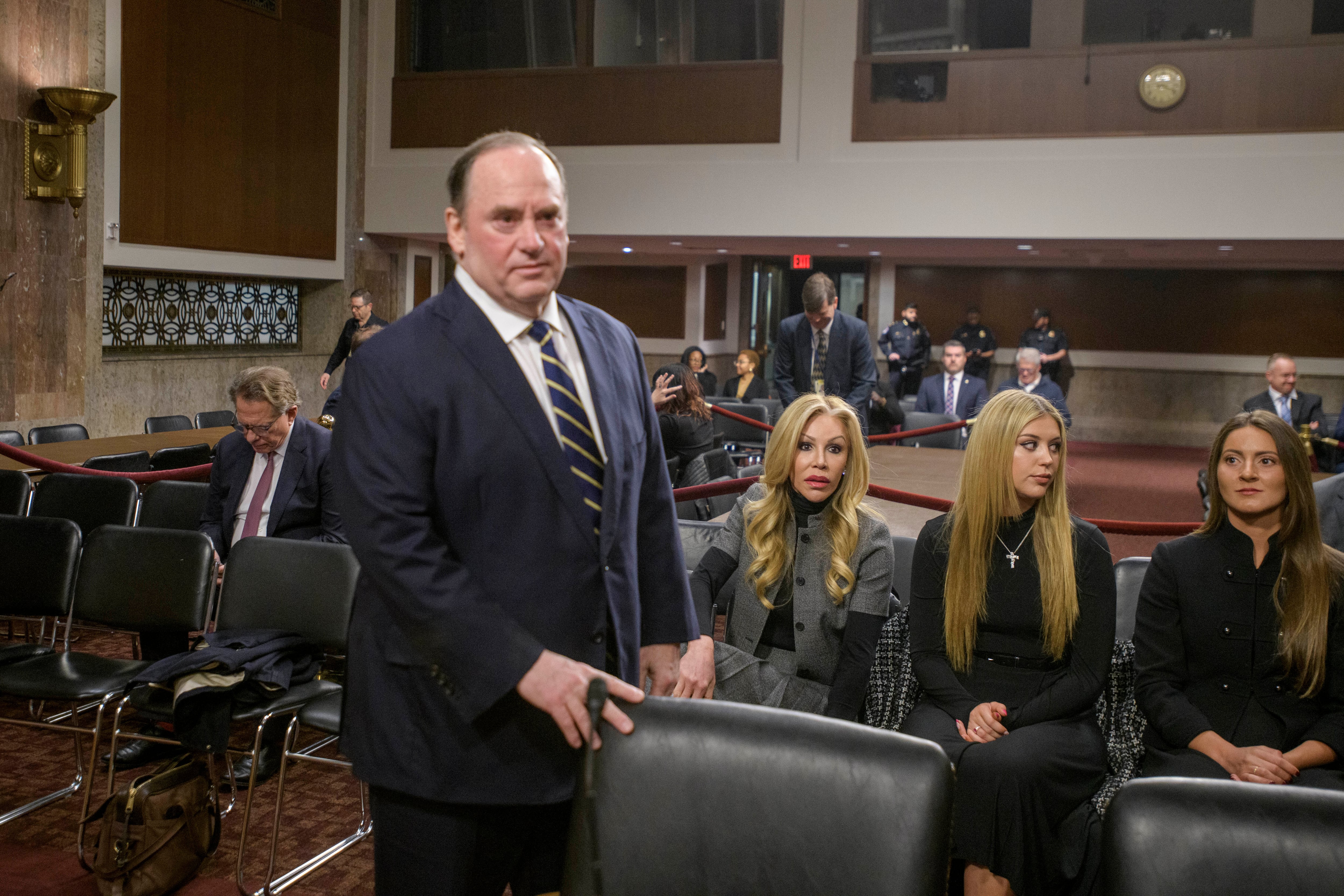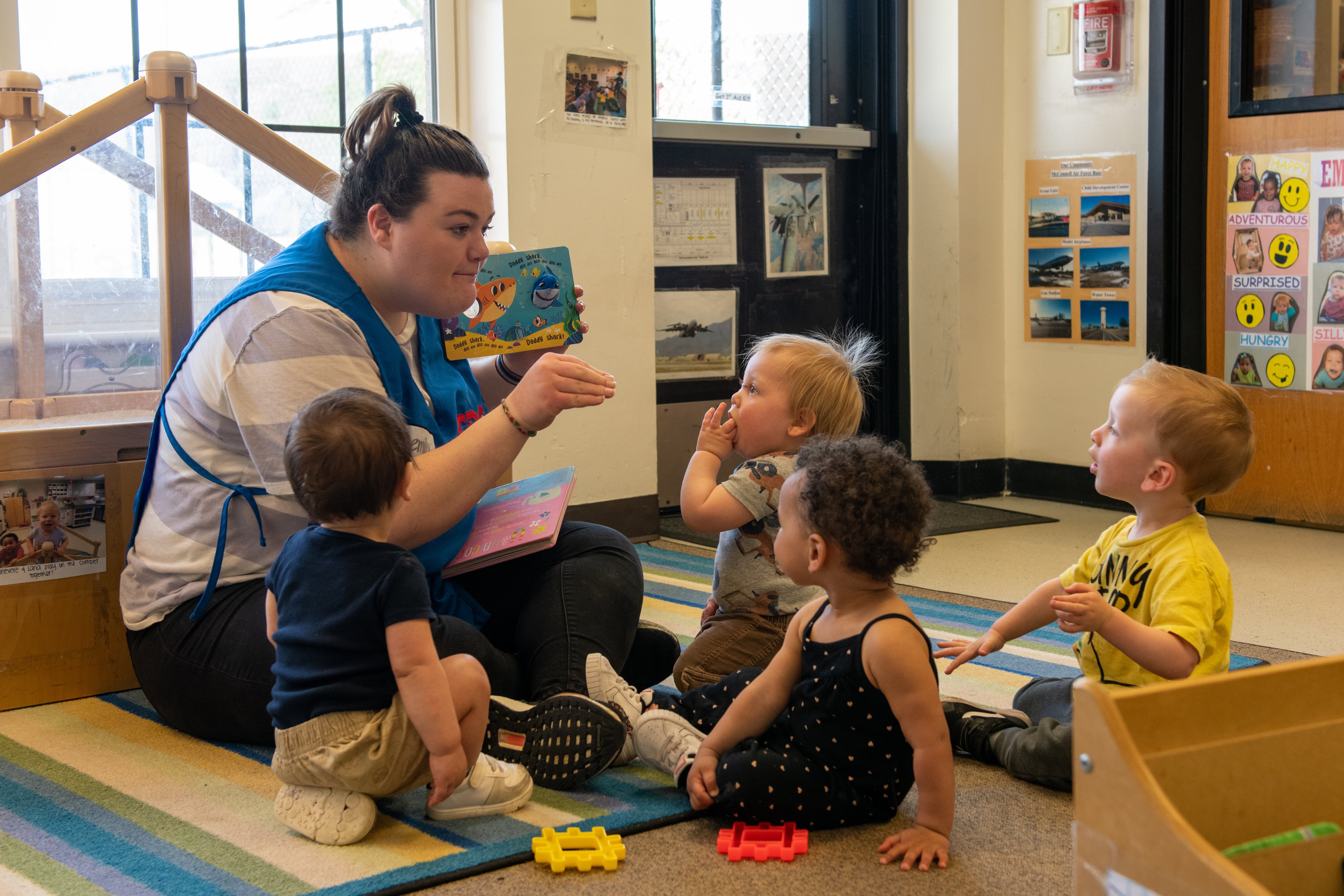Several of the U.S. Navy’s top shipbuilding programs are running one year to three years behind schedule, as the service and the industrial base grapple with workforce and management challenges.
Navy leaders conducted a 45-day review of its shipbuilding portfolio, following news in January that a first-of-class guided-missile frigate was behind schedule due in part to a workforce shortage at Fincantieri’s Marinette Marine shipyard in Wisconsin.
Coupled with existing delays to the Virginia-class attack submarine construction line and worries those delays might spill over to the top-priority Columbia-class ballistic missile submarine, Navy Secretary Carlos Del Toro that month ordered an “assessment of national and local causes of shipbuilding challenges, as well as recommended actions for achieving a healthier U.S. shipbuilding industrial base that provides combat capabilities that our warfighters need, on a schedule that is relevant.”
A snapshot of delays
The review’s leaders, Navy acquisition chief Nickolas Guertin and Naval Sea Systems Command head Vice Adm. James Downey, told reporters April 2 the review provided a snapshot of shipbuilding delays and challenges.
Based on current performance, the Navy projects the first Columbia-class SSBN will deliver 12 to 16 months later than its contractual delivery date of October 2027. The submarine is built by General Dynamics’ Electric Boat and HII’s Newport News Shipbuilding.
This is particularly worrisome because the vessel is expected to deploy shortly after its post-delivery testing and training. The Navy is obligated to have 10 SSBNs ready to deploy, lurking beneath the oceans while carrying nuclear missiles. The service is counting on the lead Columbia boat to deliver in 2027 so it can go on its maiden patrol in 2031. With any delays, the Navy will dip below the requirement.
Guertin said the Navy took significant steps prior to the pandemic to reduce risk on this program and accelerate the schedule where possible.
Supply issues
“COVID happened. Supply chain changed. Workforce greening happened,” he said, but previous risk-reduction steps kept the pandemic impacts “as minimal as possible.” The Columbia program, the Navy’s top acquisition priority, is the least delayed of the new programs assessed in the shipbuilding review, Guertin said.
The review shows the Navy’s Block IV Virginia submarines, which were bought from fiscal 2014 to 2018, are running 36 months behind schedule. The attack submarines rely on the same shipbuilders and suppliers as the Columbia program, but they’ve taken the brunt of delays to keep Columbia on track.
There are signs of improvement, though, with the Block V boats bought from FY19 to FY23 projected to be about 24 months behind schedule.
Downey said the Navy put additional work into the Block V design, and a performance improvement plan created for the Block IV boats would also lead to shorter construction timelines for Block V.
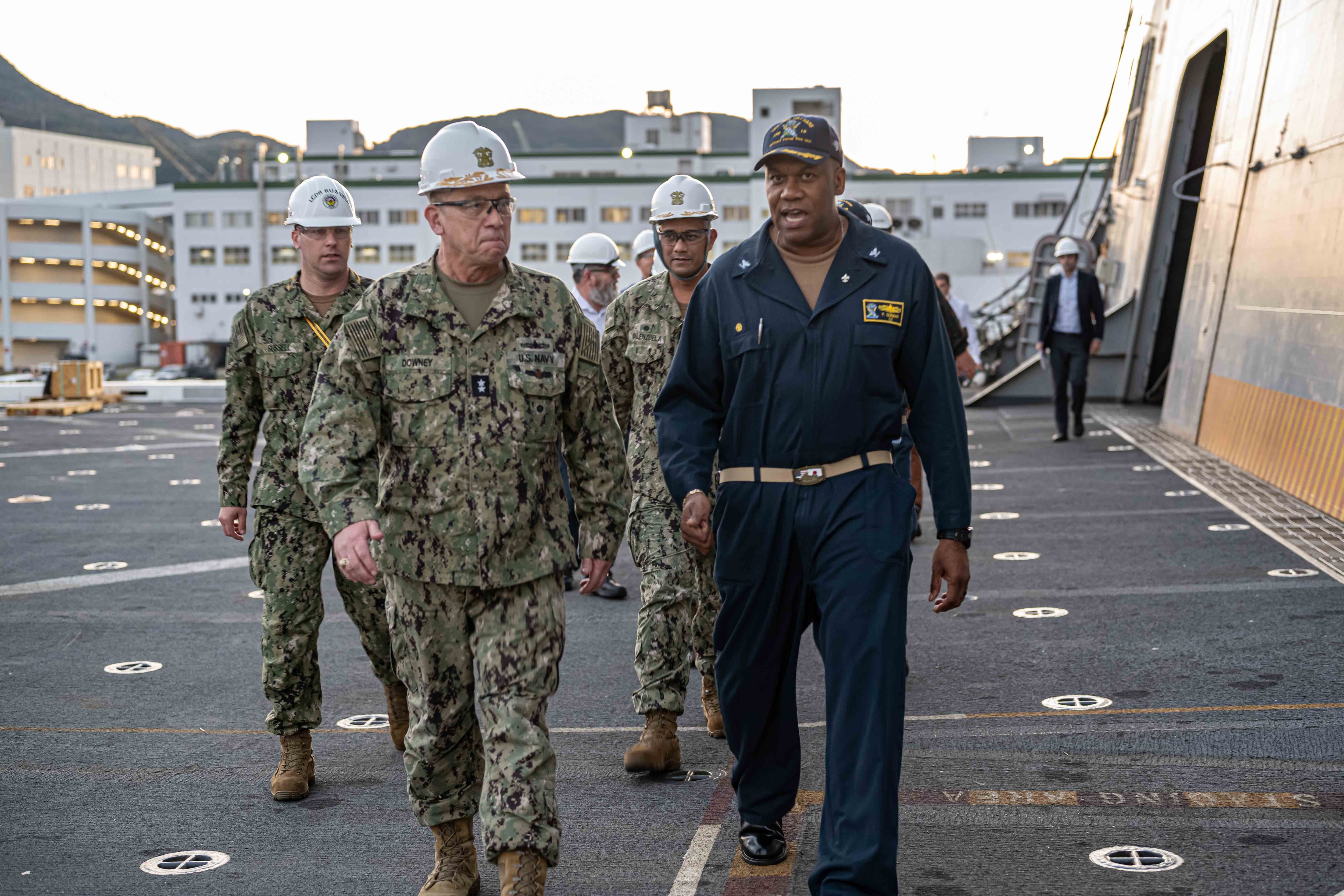
The Navy’s next nuclear-powered aircraft carrier, which relies on many of the same overburdened suppliers as the submarine programs and is also built at Newport News Shipbuilding, is also delayed. The future Enterprise, CVN-80, is expected to deliver 18 to 26 months late.
Defense News reported in October the ship was running about a year behind schedule. That has worsened, with Downey saying some key suppliers are behind in their deliveries to Newport News. As a result, the Navy is delaying buying subsequent ships CVNs 82 and 83, pushing their procurement from FY28 to FY30.
Downey noted that the next carrier in line, the Doris Miller, CVN-81, has been shielded from delays thanks to a two-carrier contract that’s allowed Newport News Shipbuilding to place material orders much earlier.
The first Constellation frigate, built in Wisconsin by Fincantieri’s Marinette Marine shipyard, will deliver 36 months later than its contractual delivery date.
Downey said this is due to a couple factors: Marinette Marine has gone from managing just one program at the small yard to now juggling three: finishing up the littoral combat ship program, building the multi-mission surface combatant for the Saudi navy, and now designing the Constellation-class frigate. The yard has a higher workload, has to manage programs at different stages, and has had to ramp up hiring even as it’s seen greater attrition than some other yards.
Downey said the Navy has taken some steps to better manage this program, including asking government, Fincantieri and subcontractor designers to all move to a single office at the Wisconsin shipyard so they can get through the remaining design work together as efficiently as possible.
As for the more mature surface ship production lines — the San Antonio-class amphibious transport dock and America-class amphibious assault ships at Ingalls Shipbuilding, the Arleigh Burke-class destroyers at Ingalls and General Dynamics’ Bath Iron Works and the John Lewis-class oiler at General Dynamics’ NASSCO — the Navy notes these ships are predicted to deliver later than what’s outlined in their contracts, but in line with revised program manager estimates.These ship programs were “rebaselined” as the COVID-19 pandemic and subsequent labor and supply disruptions wreaked havoc on schedules, but Downey said they’ve kept to these new post-COVID schedules.
Workforce challenges
Guertin said there were two buckets of challenges the team found during this review: lead ship issues, including design maturity, first-in-class construction challenges, and the size and skillset of the design workforce; and ship class issues, including acquisition and contracting strategies, supply chain weaknesses, shortage of skilled tradesmen, and gaps in the government workforce.
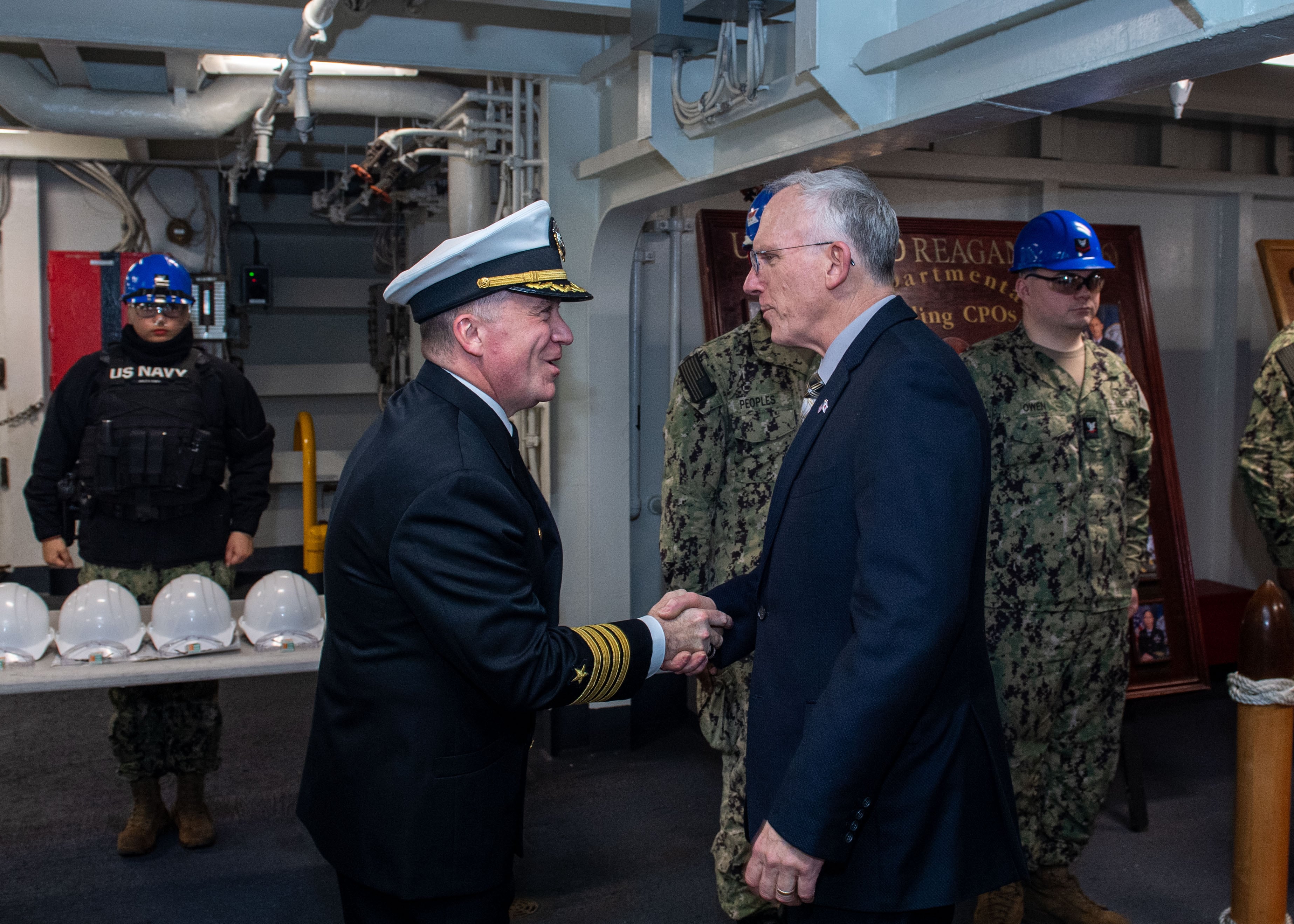
Guertin said some things are the new normal: “the supply chain is different now,” he said, and the Navy needs to ensure it and its shipbuilders buy materials farther ahead of the start of construction. The “greening of the workforce” — or replacing a highly experienced workforce that’s retiring in high numbers with less experienced employees — has also “changed dramatically” the realities of ship design and waterfront tradecraft work.
Guertin said this review revealed that the entire workforce — the government, the shipbuilders and the entire supply chain — ought to be viewed and invested in as a national strategic asset. He said the review also highlighted that risk-sharing between the government and shipbuilders had faltered and that the balance of that risk should be reconsidered for future contracts.
Downey added a few lessons of his own as it relates to the Navy’s government workforce. He said the review highlighted the need for more scrutiny in the design process and suggested the Navy might bring in some extra eyes beyond just the program offices involved. The Navy has been less involved in ship design over the years and has therefore seen a decrease in the size and skill of its own design workforce, which should be addressed. And he said the Navy has significant oversight responsibilities today, with more than 80 ships on contract, and that the oversight work is straining the current workforce.
Megan Eckstein is the naval warfare reporter at Defense News. She has covered military news since 2009, with a focus on U.S. Navy and Marine Corps operations, acquisition programs and budgets. She has reported from four geographic fleets and is happiest when she’s filing stories from a ship. Megan is a University of Maryland alumna.
